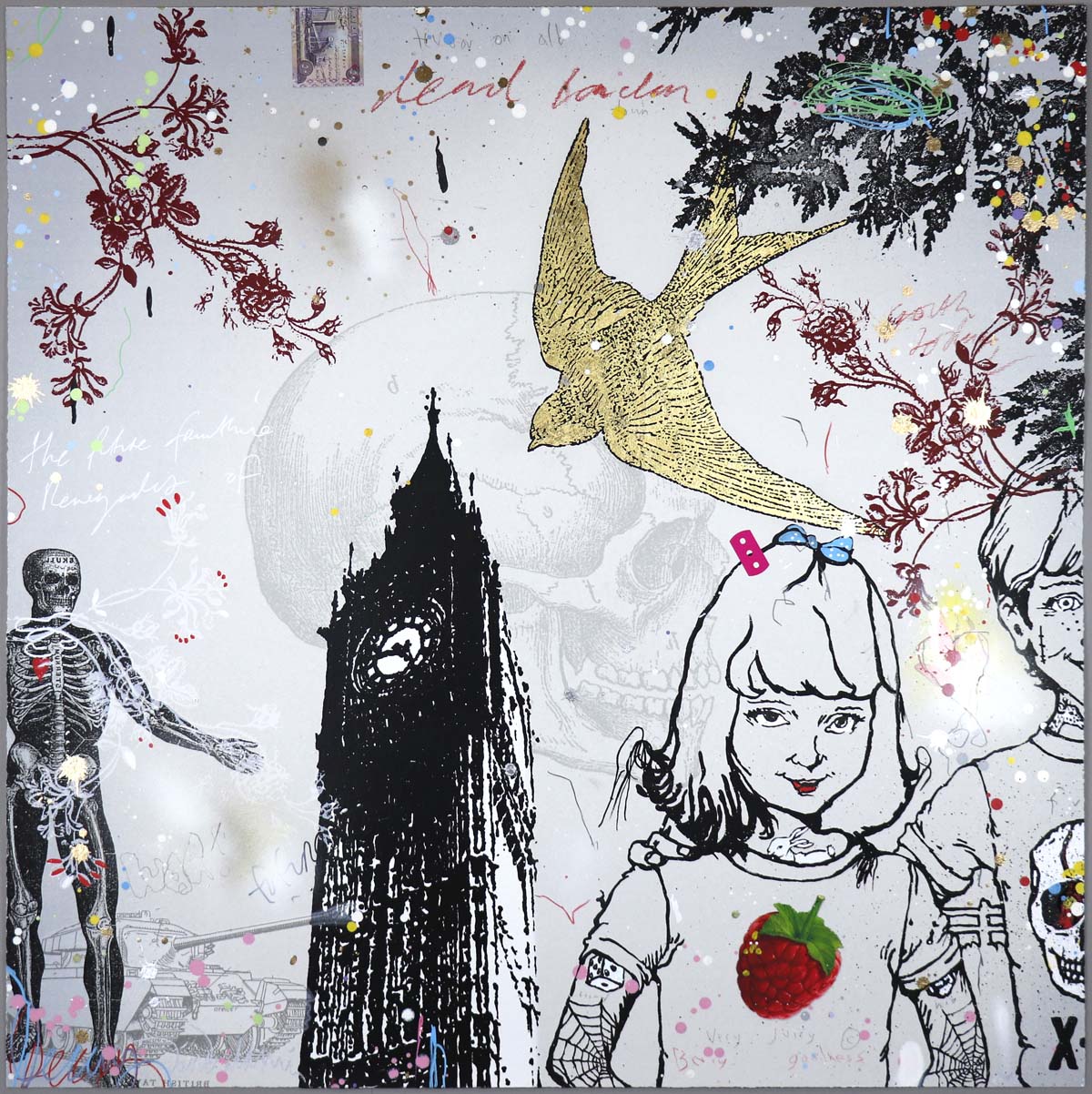When does vandalism become art? For some, it is when a grotty brick wall suddenly comes to life with colour, words, and images. For others, it is only when the auction houses and galleries start to put inflated prices on it. Since its beginnings in the later half of the 20th Century, street art has always been a complex and controversial movement - perhaps even more so now that it is recognised as a form of ‘high art’, with its artists exhibiting in museums and galleries all over the world.
'Street art’ was a movement that had its humble beginnings in the world of graffiti, a form of visual expression that became popularized in the 1960s and 70s in America, as a backlash to growing commercialisation. Through the ‘tagging’ of the urban landscape using marker pens and spray-cans, graffiti allowed artists to express their frustrations with society in an anonymous, albeit illegal, way.
As street art became more and more popular in the 1980s, no corner of the urban landscape was out of bounds, and artists began to one-up each other with more daring targets for their ‘tags’. With this freedom also came artistic experimentation, and street art evolved to include a number of different styles such as stencils, freehand spray-painting, and collage, also moving beyond traditional tagging of walls, to large scale murals, site-specific installations, and sculptures. Despite the movement’s rapid growth, the key philosophies of street artists remained a constant - a desire to create art that was free and accessible to all, taking it beyond the gallery walls and into our urban neighborhoods.
By the end of the 20th Century, street art was globally recognised, and with New York based artists such as Keith Haring and Jean-Michel Basquiat now household names in the art world, the street art phenomenon also started to appear in European cities with artists such as Blek Le Rat, the pioneer of stencil art in Paris, and of course the now world renowned British stencil-artist, Banksy.
_2010.jpg)
ANDRE SARAIVA
Mr A (Pink), 2010
Edition of 50
59(w) x 84(h) cm
23.39(w) x 33.11(h) inches
_2010.jpg)
ANDRE SARAIVA
Mr A (Pink), 2010
Edition of 50
59(w) x 84(h) cm
23.39(w) x 33.11(h) inches
|
|
|
59(w) x 84(h) cm
23.39(w) x 33.11(h) inches
|
Screenprint on 300gsm Somerset satin
Edition of 50
|
|
The nature of street art being both immediate and accessible meant it had huge potential to influence, with some artists so prolific that their work became part of the popular culture of the time, having the same power of recognition as some of the biggest global brands. Artists such as
André started tagging the streets of Paris at the age of thirteen, creating hundreds of thousands of versions of his simple but somewhat endearing fictional stick-figure character,
Mr A (Pink). André earned a reputation as a renowned graffiti artist, and his illustrations are now instantly recognised and found not only on the streets, but in fashion accessories, surfboards, and screenprints.
It is at this point in the history of street art that we start to see a clash between the original philosophies of the movement, and the nature of the commercial art world. As street artists developed into commercial artists, their artwork naturally evolved off the ‘street’ and into the galleries and auction houses. While some may see this as working directly against the key principals of street art - being a temporary form of art, as well as free to all - it also illustrates a natural evolution from the humble beginnings of graffiti, to a now internationally recognised form of high art.
Still a popular movement today, street art has also had a strong influence on contemporary art in the current market. There are now a number of more correctly termed ‘urban artists’ who may not work in ‘the street’, but have adapted many of the original graffiti styles and street art aesthetics.
Dan Baldwin, a contemporary artist who has exhibited with artists such as Banksy and
Peter Blake, creates art that sits somewhere between the aesthetic ideals of ‘street’ and ‘pop’ art. He is a good example of how many of the best contemporary artists of today are influenced by street art principals, responding to our urban society with strong political messages in their art, as well as literally adapting street-art styles such as stenciling, collage, and spay-painting.

DAN BALDWIN
The Future Frontline Renegades of Dead London, 2009
Edition of 15
100(w) x 100(h) cm
39.37(w) x 39.37(h) inches

DAN BALDWIN
The Future Frontline Renegades of Dead London, 2009
Edition of 15
100(w) x 100(h) cm
39.37(w) x 39.37(h) inches
|
|
|
100(w) x 100(h) cm
39.37(w) x 39.37(h) inches
|
Hand finished 15-colour silkscreen print with gold leaf and collage on 300gsm Fabriano Artistico paper, Hand torn to edge
Edition of 15
|
PRICE
|
£ 4,000.00
|
|
Available from a private collection
|
|
In many ways, ‘urban art’ is really a translation of street art into a more consumable medium. Perhaps this is a troubling thought considering the original intentions of the movement. However, the recognition of urban art styles by the art world and general public has also allowed street art to be more widely accepted. Landlords and councils are now recognising the power and potential of street art to bring beauty and originality toour streets - in some cases even boosting property values and tourism for a city. And so the authorities are starting to ‘look the other way’ at popular street-art sites, and have even commissioned original pieces of street art to encourage the street art medium in a legal way. After all, inherently street art will always be defined by its very name, and even the most successful artists of the movement will continue to work on the streets, with or without permission.